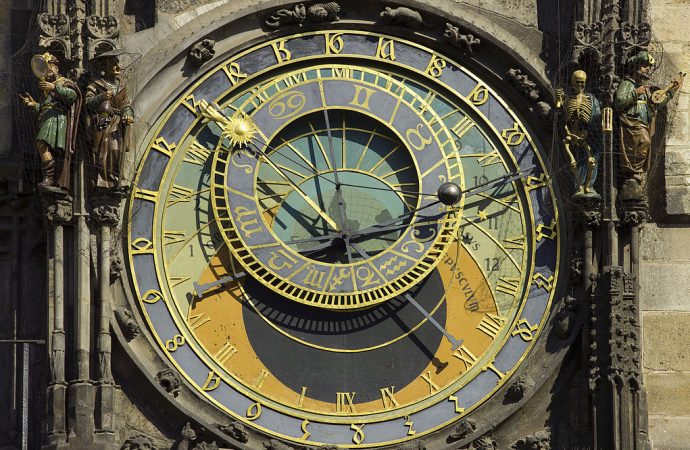Seasons change, days elapse, bodies adapt. Time is sovereign and we are its slaves. An intricate machinery lies inside humans, bears, mice, flies; it’s in all living things made of more than one cell. This internal clock aligns our biological rhythm to the Earth’s rotation. As the Earth, we move in 24-hour periods: the circadian cycles.
Internal clocks are present in various tissues, but the major clockpit is in the suprachiasmatic nuclei, a cluster of genes located in the forebrain. If this region is destroyed, the regular sleep cycles disrupt. When light travels through the retina and hits the suprachiasmatic area, it activates the genes necessary to keep the clock ticking. This year’s Medicine Nobel laureates started to investigate how those genes worked in the early 80s.
The period gene
Hall and Rosbash worked together. They were interested in the period gene, which had been identified a decade before. The two scientists wanted to understand why mutations in this gene disrupted the circadian cycles. In 1984, they isolated the gene for the first time and, in the beginning of the 90s, they understood its mechanisms.
The per mRNA is an intermediate of the per gene and the PER protein. The mRNA leaves the nucleus and, in the cell cytoplasm, turns into a functional protein. Hall and Rosbash saw that, in the cytoplasm, the PER protein levels oscillate in a 24-hour cycle. PER is synthesized during the night when the per gene is active and accumulates later in the night and during the day. In the early evening, when the concentration reaches a peak, the protein levels decrease. Hall and Rosbash proposed that the PER “protein is involved in a feedback loop that influences the cycle of its own mRNA”. When its concentration is high, the PER protein enters the nucleus and blocks the activity of its own gene, thus creating a cycle.
The timeless gene

What allowed the protein to enter the nucleus and create a cycle was not yet clear to them. Young, who worked aside from the Boston duo, was about to find out. He saw that, when lacking a gene, which he named timeless, fruit flies could not maintain a rhythmic behavior. Based on the feedback loop proposed by Hall and Rosbash, Young concluded that the TIM protein is essential to maintain the circadian cycle and that it must somehow influence the behavior of the period gene. He described the mechanism by which TIM and PER interact to form a complex and permeate the nucleus, to block the activity of the period gene.
The Nobel Prize surprised for the trio. Undoubtedly, they were pioneers; since their discoveries, our knowledge of biological clocks expanded. We recognize the perils of night-shifts, jet lag, and winter depression. We study the best time to take a drug or perform a surgery. But circadian rhythms are no longer trendy, especially compared to CRISPR or immunotherapy.
For Jerome Groopman, a biology writer for the New Yorker magazine, this year’s message is clear. “Basic science is under siege, particularly in the USA”, he writes. “It is possible that, in today’s political environment, Hall, Rosbash, and Young would never have received the money for their research”. “But, as the Nobel committee made clear”, Groopman continues, “the science that informs and occasionally upends our understanding of human health and disease comes from often unexpected places. The joy of Science is to learn for learning’s sake.”
References:
[1] Zehring, William A., et al. “P-element transformation with period locus DNA restores rhythmicity to mutant, arrhythmic Drosophila melanogaster.” Cell 39.2 (1984): 369-376.
[2] Bargiello, Thaddeus A., F. Rob Jackson, and Michael W. Young. “Restoration of circadian behavioural rhythms by gene transfer in Drosophila.” Nature 312.5996 (1984): 752-754.
[3] Hardin, Paul E., Jeffrey C. Hall, and Michael Rosbash. “Feedback of the Drosophila period gene product on circadian cycling of its messenger RNA levels.” Nature 343.6258 (1990): 536-540.
[4] Vosshall, Leslie B., et al. “Block in nuclear localization of’period’protein by a second clock mutation,’timeless.'(circadian clock)(Cover Story).” Science 263.5153 (1994): 1606-1610.
[5] Price, Jeffrey L., et al. “double-time is a novel Drosophila clock gene that regulates PERIOD protein accumulation.” Cell 94.1 (1998): 83-95.
Sources:
Groopman, J; (2017, October) “The Real Message of the 2017 Nobel Prize in Physiology Medicine”; The New Yorker; [retrieved from https://www.newyorker.com/tech/elements/the-real-message-of-the-2017-nobel-prize-in-physiology-medicine]
Image Credit: Andrew Shiva



